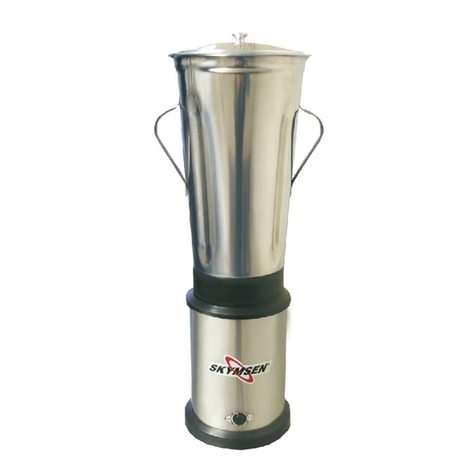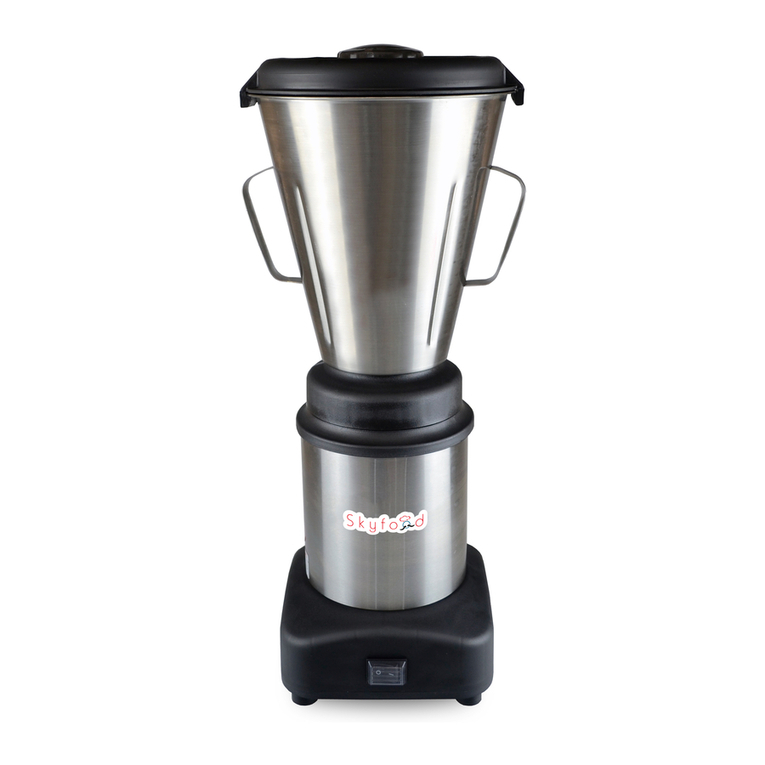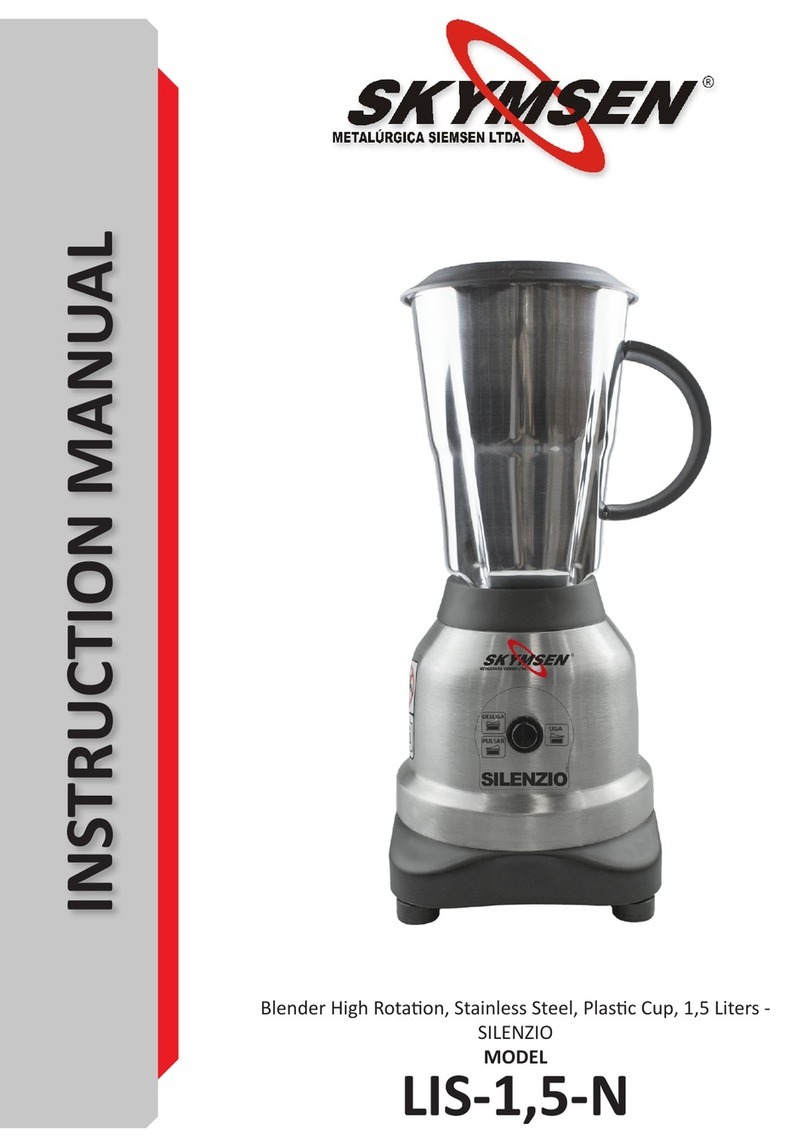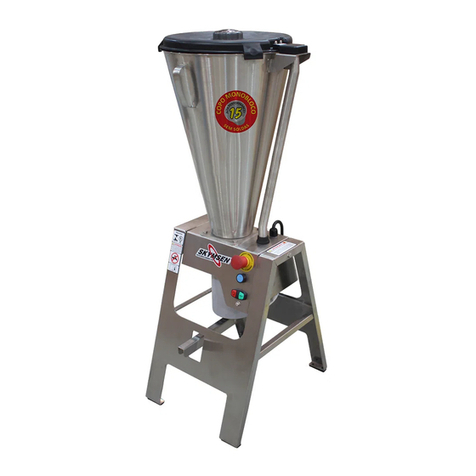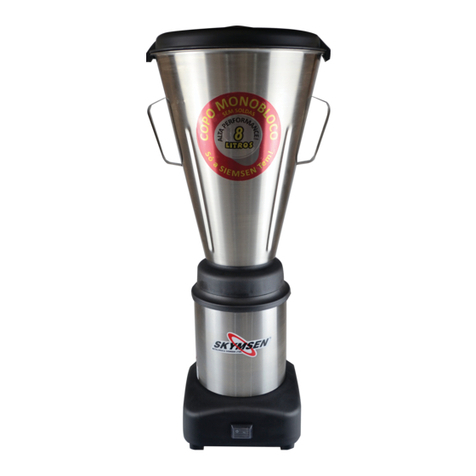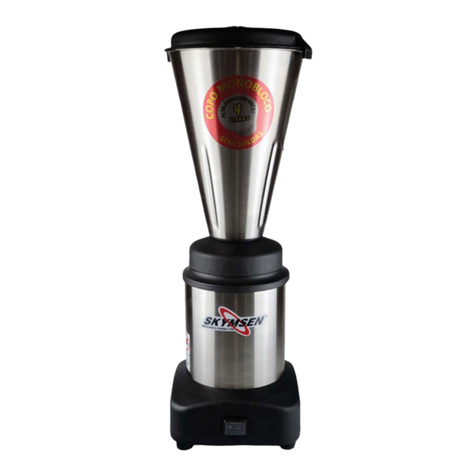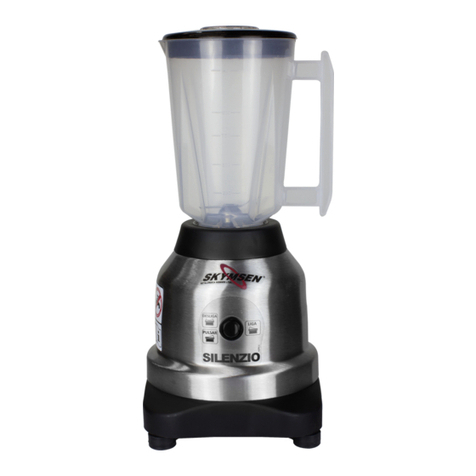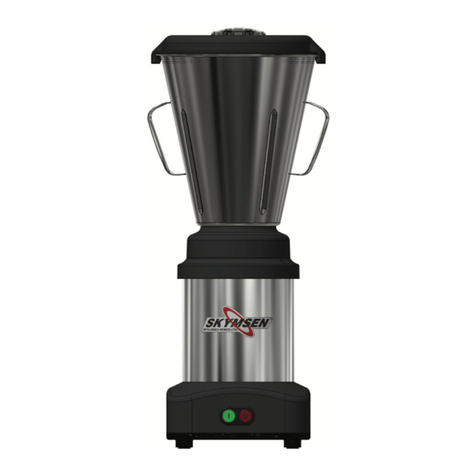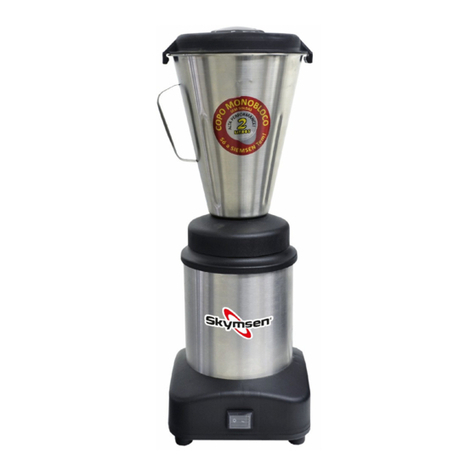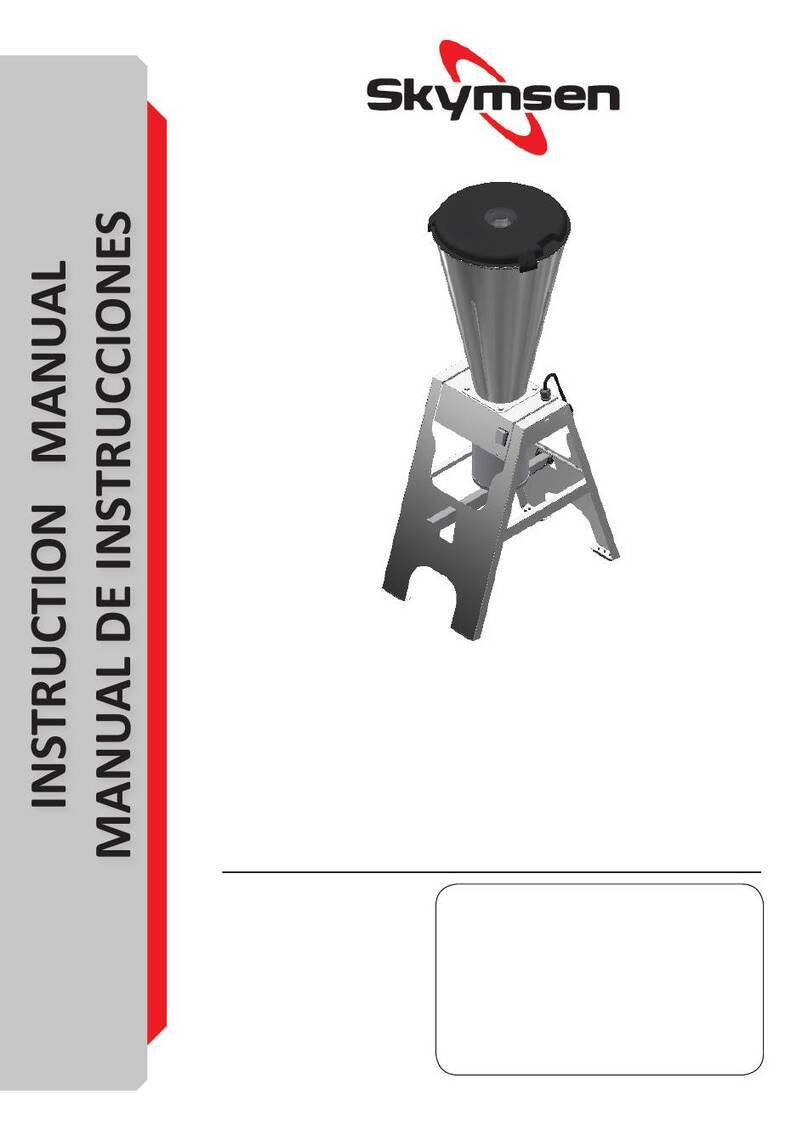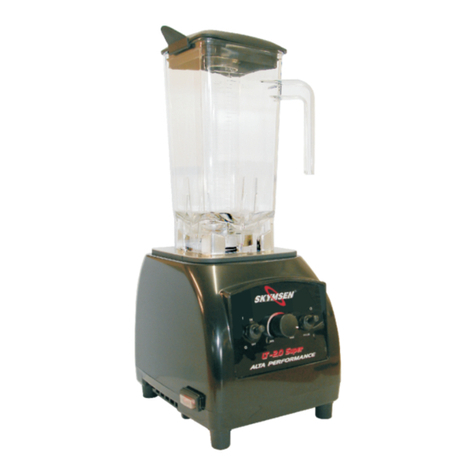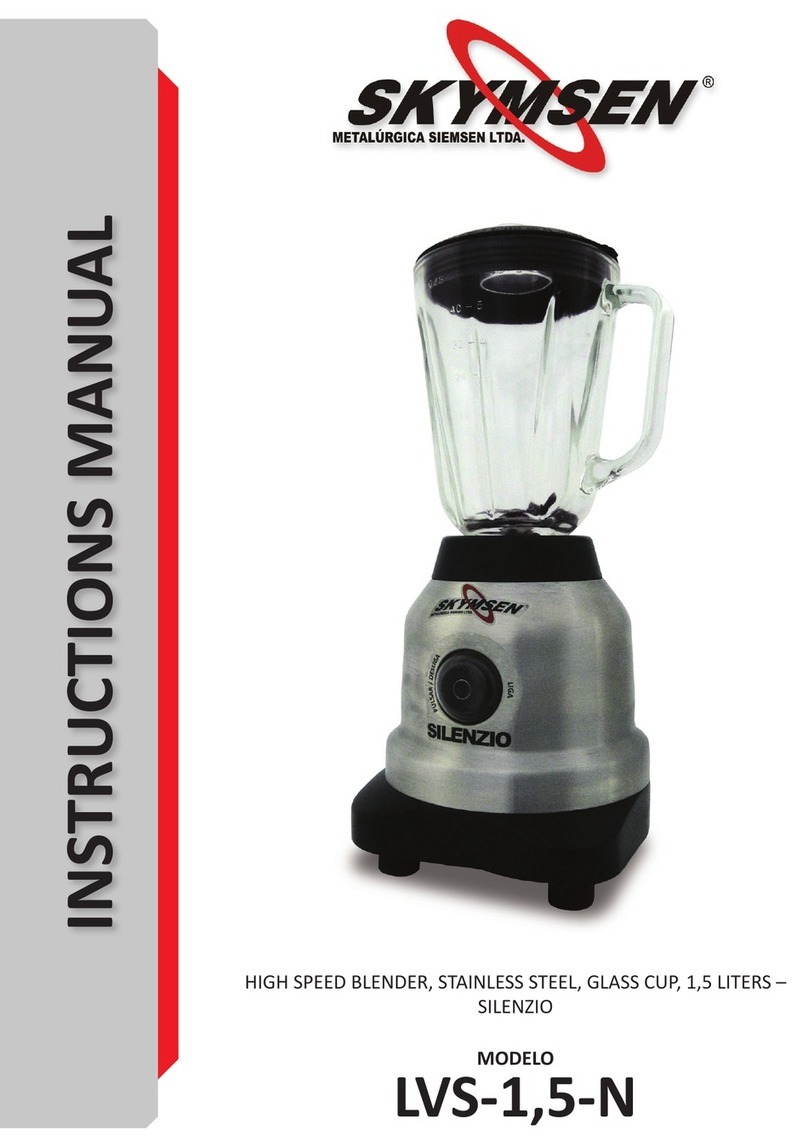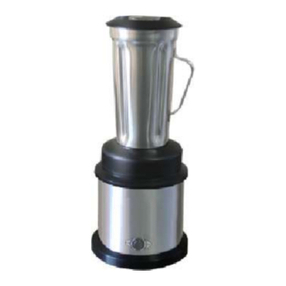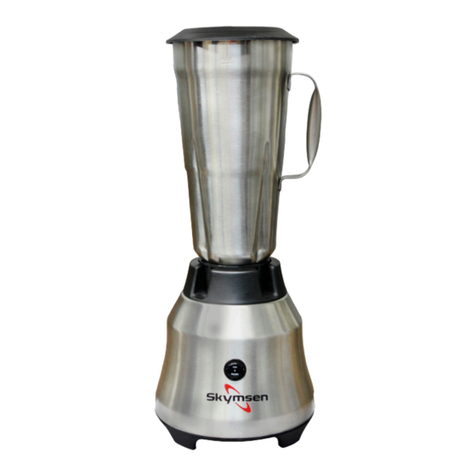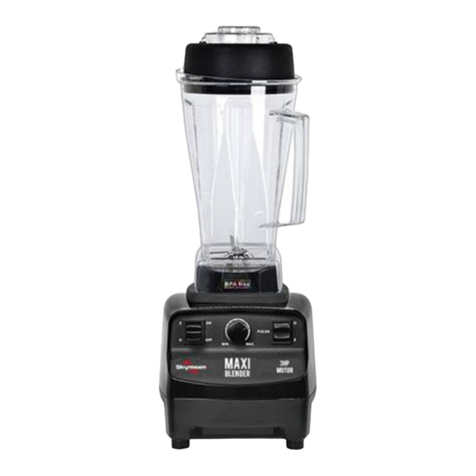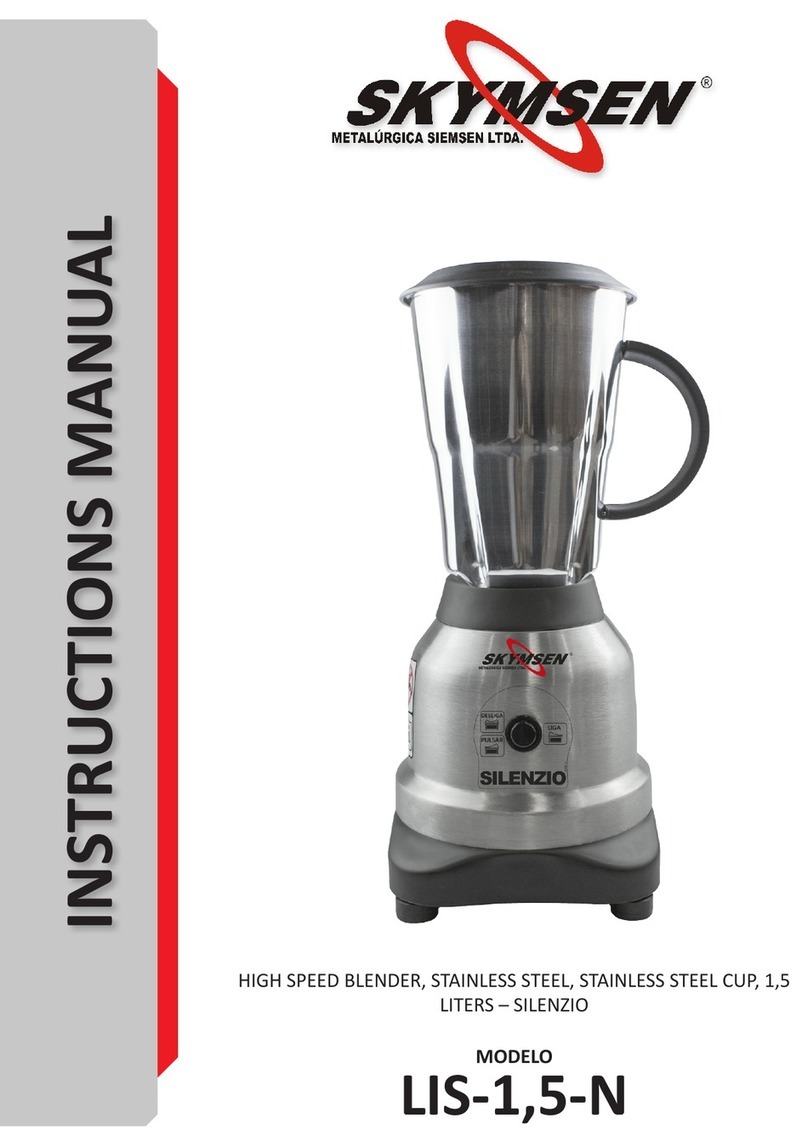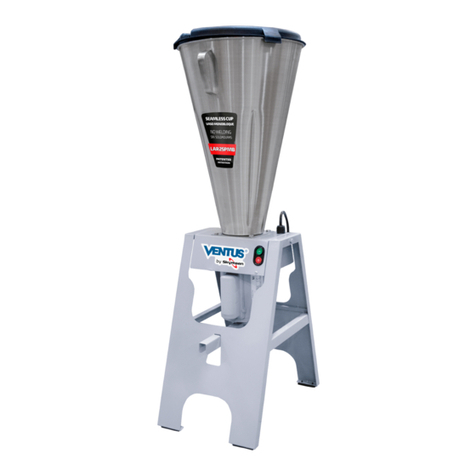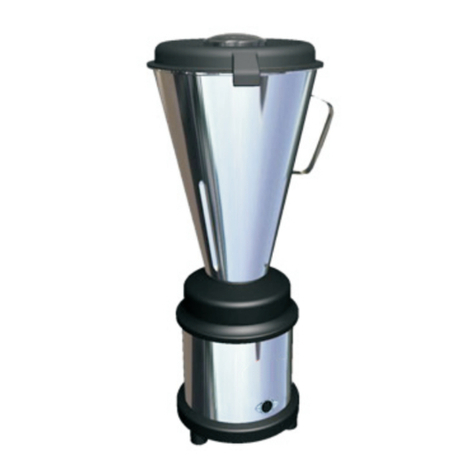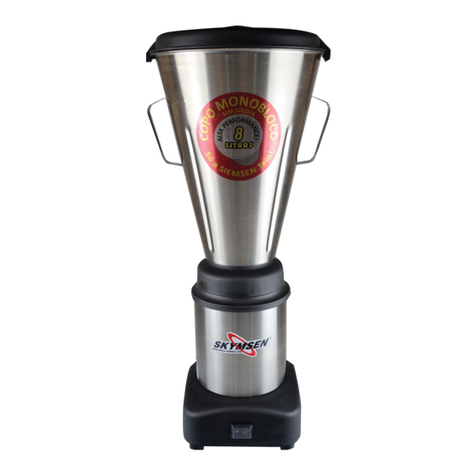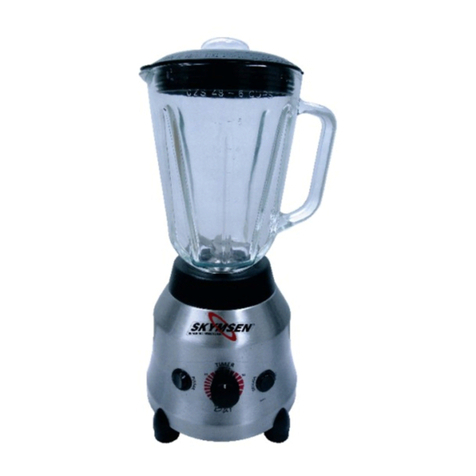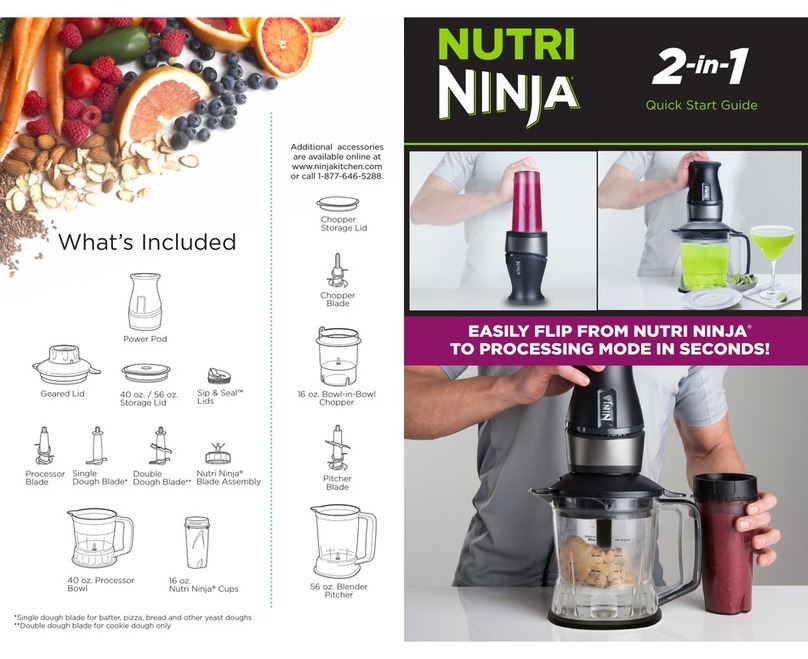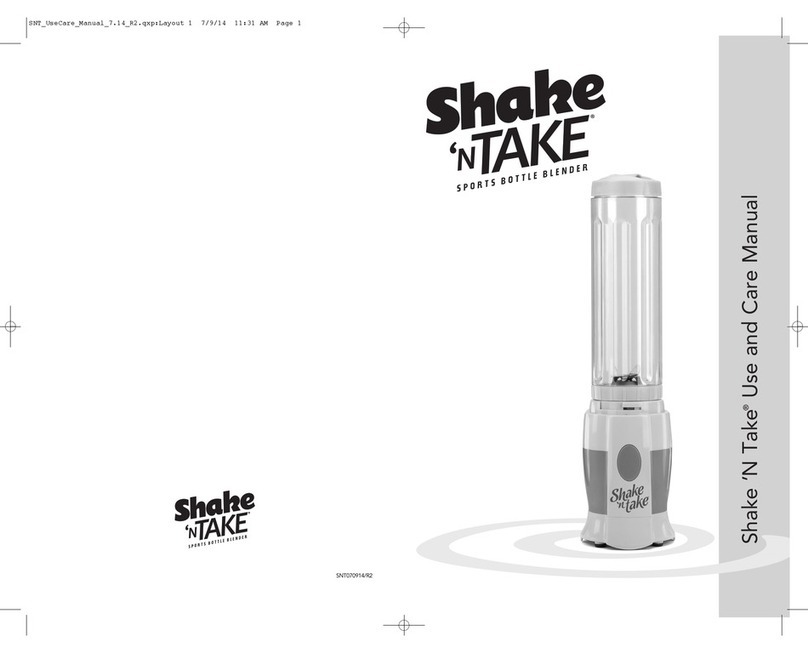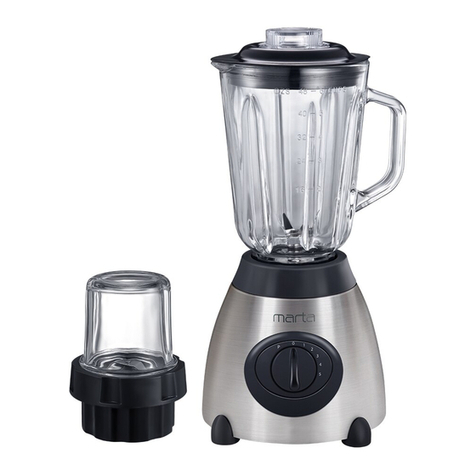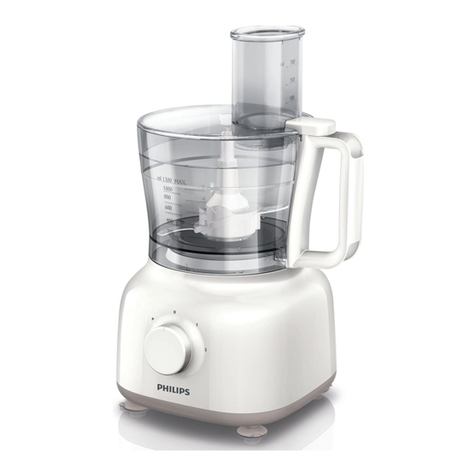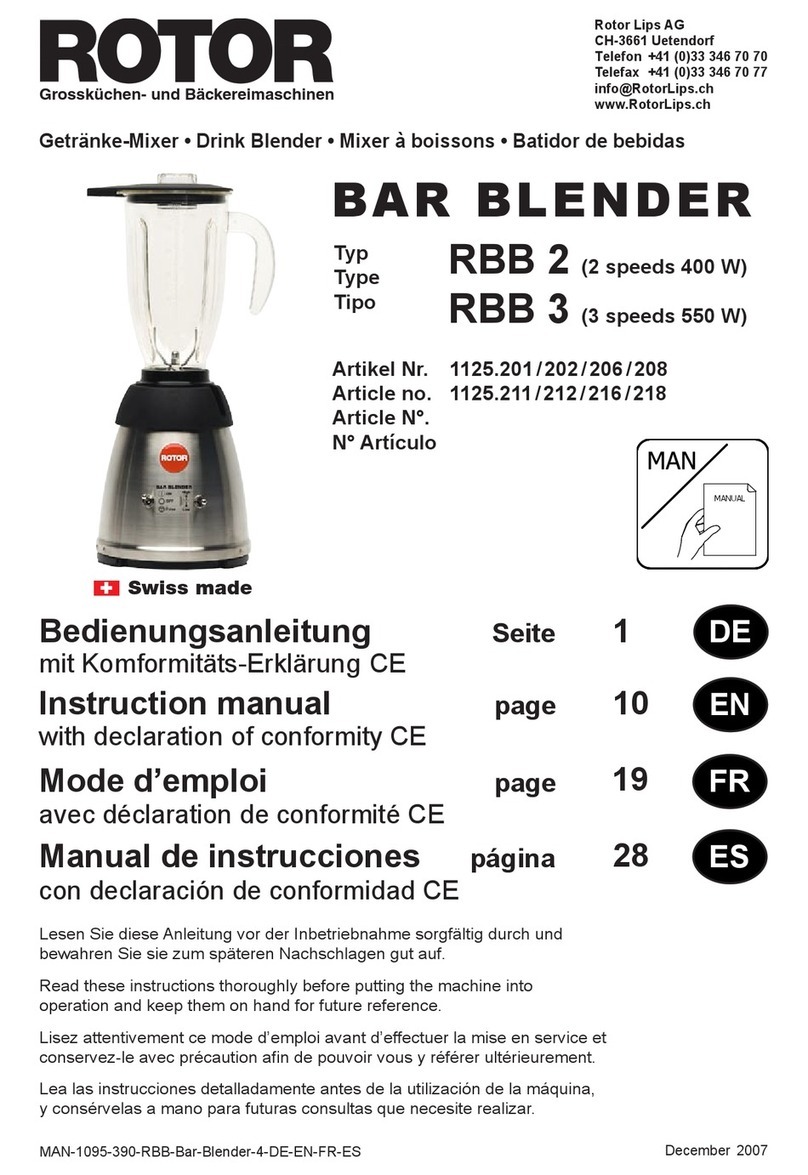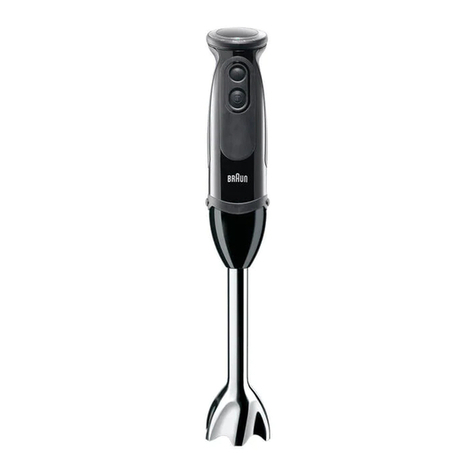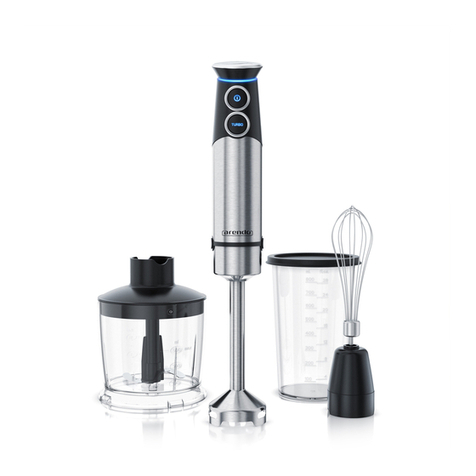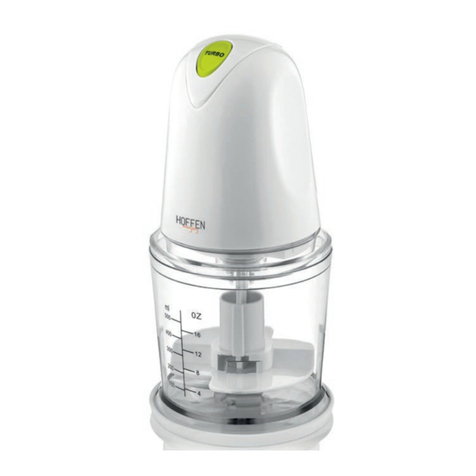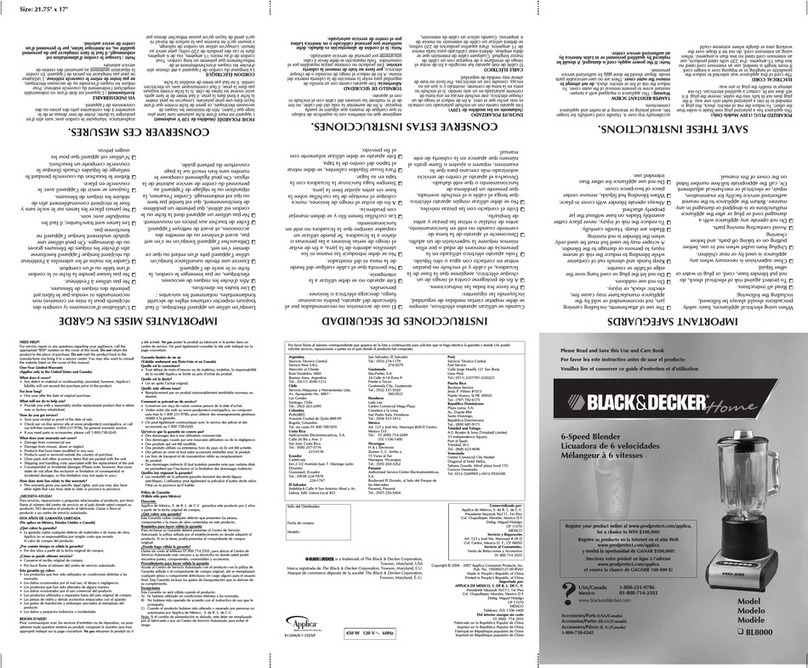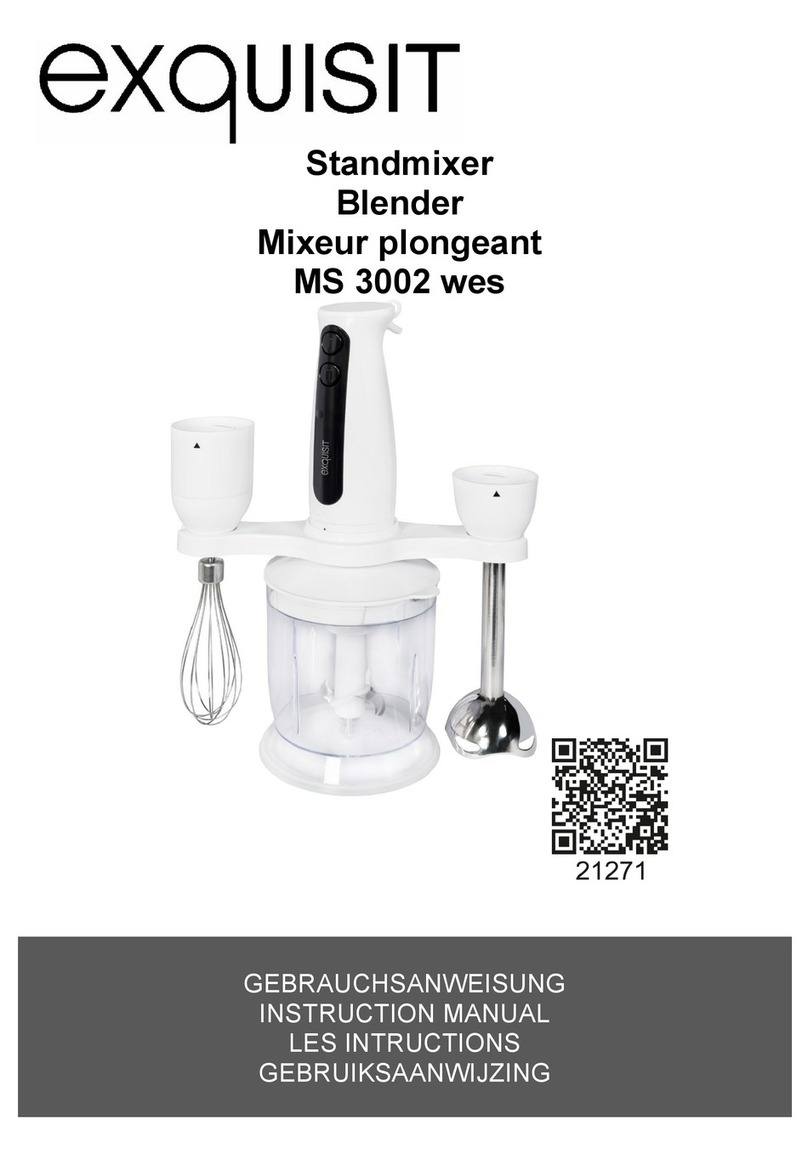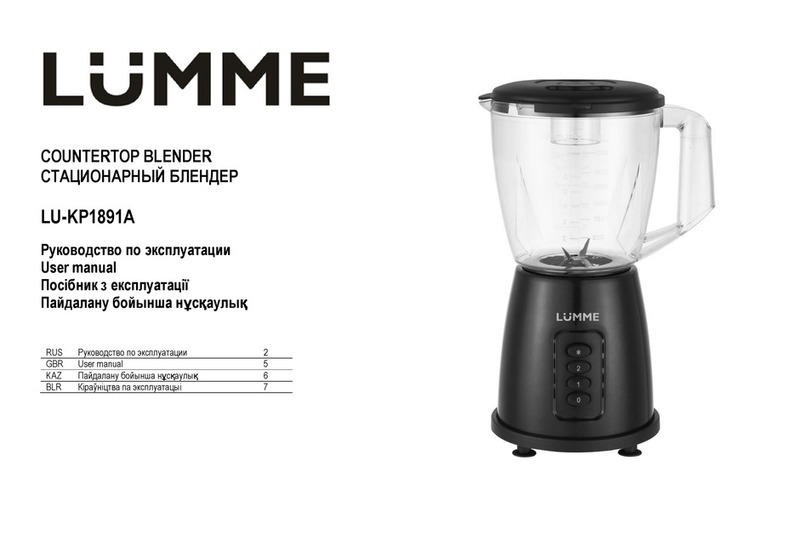04
Instruction to wash the machine :
.
Switch OFF the machine.
. Withdraw the Lid No. 01 (Pic.02) and the Bowl No. 02 (Pic.02 ).
. Wash all parts with water and soap , except the Cabinet No. 03(Pic.02).
. To assemble the parts back , follow the inverse pass .
To clean the Cabinet use an alcohol wet cloth .
Important
When cleaning the Bowl inside watch the knife blades because they are very
sharp .
01 . Lid
02 . Bowl
03 . Cabinet
05
3.3 Cleaning
Important
Never clean the machine when plugged to the electric network . Before
cleaning , withdraw the plug from the socket .
Before to withdraw the Bowl be sure the motor has stopped completely .
Picture - 02
01
02
03
4. General Safety Advices
The General Safety Advices were prepared to properly instruct the
operators and the maintenance team .
The machine shall only be given to the operators in good working
conditions and they shall be properly oriented by the dealer, about how to use it with
safety .
The operator shall only use the machine after a complete knowledge
of the cares to be taken when operating the machine , carefully reading all this
Instruction Manual . 05
IMPORTANT
If any item from the GENERAL SAFETY NOTIONS section is not
applicable to your product, please disregard it.
Cleaning must always be done immediately after using the equipment. For
such end, use water, neutral soap or detergent, and clean the equipment with a
soft cloth or a nylon sponge. Then rinse it with plain running water, and dry
immediately with a soft cloth, this way avoiding humidity on surfaces and
especially on gaps.
The rinsing and drying processes are extremely important to prevent stains
and corrosion from arising.
IMPORTANT
Acid solutions, salty solutions, disinfectants and some sterilizing solutions
(hypochlorites, tetravalent ammonia salts, iodine compounds, nitric acid
and others), must be AVOIDED, once it cannot remain for long in contact
with the stainless steel:
These substances attack the stainless steel due to the CHLORINE on its
composition, causing corrosion spots (pitting).
Even detergents used in domestic cleaning must not remain in contact with
the stainless steel longer than the necessary, being mandatory to remove it with plain
water and then dry the surface completely.
Use of abrasives:
Sponges or steel wool and carbon steel brushes, besides scratching the
surface and compromising the stainless steel protection, leave particles that rust and
react contaminating the stainless steel. That is why such products must not be used
for cleaning and sanitization. Scrapings made with sharp instruments or similar must
also be avoided.
Main substances that cause stainless steel corrosion:
Dust, grease, acid solutions such as vinegar, fruit juices, etc., saltern
solutions (brine), blood, detergents (except for the neutral ones), common steel
particles, residue of sponges or common steel wool, and also other abrasives.
3.3.1 Cautions with Stainless Steel:
The Stainless Steel may present rust signs, which ARE ALWAYS CAUSED
BY EXTERNAL AGENTS, especially when the cleaning or sanitization is not
constant and appropriate.
The Stainless Steel resistance towards corrosion is mainly due to the
presence of chrome, which in contact with oxygen allows the formation of a very
thin protective coat. This protective coat is formed through the whole surface of the
steel, blocking the action of external corrosive agents.
When the protective coat is broken, the corrosion process begins, being
possible to avoid it by means of constant and adequate cleaning.

